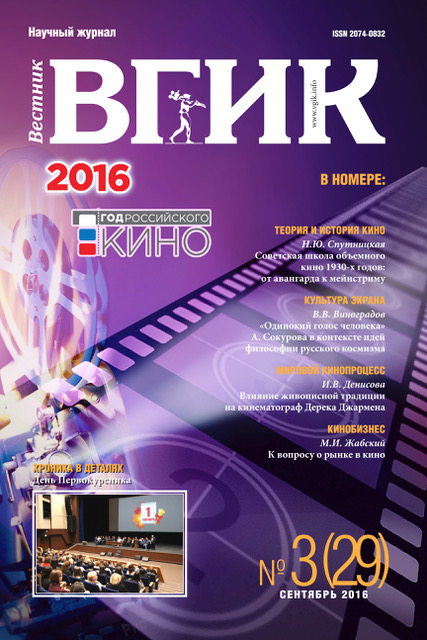The Visualization as a Way of Involvement in TV Commercials
- 作者: Fedotova L.N1
-
隶属关系:
- МГУ им. М.В. Ломоносова
- 期: 卷 8, 编号 3 (2016)
- 页面: 142-151
- 栏目: TELEVISION | DIGITAL ENVIRONMENT
- URL: https://journals.eco-vector.com/2074-0832/article/view/14721
- DOI: https://doi.org/10.17816/VGIK83142-151
- ID: 14721
如何引用文章
全文:
详细
The problem of visualization characteristic of TV and street advertising, is utterly relevant, as the follow-up of cultural and artistic origins of any new information technology helps to present potential of the creative perception of social reality historically engendering both forms of art and their artistic palette. Visualization of goods, that is demonstration them to its customers is the first phase of the exchange, and it is only foreshadowed advertising. When production becomes ponderous, information about goods should become regular, inclusive, and possibly aggressive. A wide-scale consumer boasts of increase of the number of social needs. In the course of time exhortations system has complicated to a larger extent, and their form become more diverse. Nowadays exhortation exists as a potential conclusion after reading the text. The advertising message may consist of a simple statement of some information about the offer: but it may also show. Demonstration can promote a positive attitude to the product. The heyday of this practice we can see on TV. Due to power of its pictorial capacities it shows the world in all its beauty. It just shows the power of using the product demonstration process. And most importantly - since the image might be hiding, or it reflects the pattern of life, - even a whole philosophy of life. This is the model of any symbolization - from details to the total, from the individual to the whole universe. TV used this mechanism in such mode of advertising as the celebrities marketing. The figure of the “hero” is symbolic, consumption becomes synonymous with success, achievement. Sometimes visualization of ideas have problems with limits symbolization (the example of the TVC “Daisy”). This problem becomes more urgent nowadays because the marketing communications based on unfounded statements do not work anymore. The strength of the latter particularly manifested itself under the crisis.
作者简介
Larisa Fedotova
МГУ им. М.В. Ломоносова
编辑信件的主要联系方式.
Email: editor@vestnik-vgik.com
PhD (Sociology), Professor, Lomonosov Moscow State University
参考
- Арнхейм Р. Искусство и визуальное восприятие. - М.: Прогресс, 1974. - 392 с.
- Дмитриева Н. Изображение и слово. - М.: Искусство, 1962. - 313 c.
- Федотова Л.Н. Реклама: теория и практика. - М.: Юрайт, 2015. - 391 с.
- Fotheringham W. Perspectives on Persuasion. Boston: Allyn & Bacon, 1966; Bremleck W. and Howell WS. Persuasion: A means of social control. 2nd ed. N.Y.: Prentice-Hall, 1976.
- Саморегуляция и прогнозирование социального поведения личности / под ред. В.А. Ядова. Ленинград: Наука, 1979.
- Т. Драйзер «Гений». Собр. соч.: в 12 т. Т. 7. М., 1973. С. 20.
- Зенкин С. Ролан Барт - семио-фаг. Культурное инфицирование еды // Независимая газета, 1998, 30 дек. С. 16
- Короленко В.Г История моего современника. М.: Правда, 1985.
- Эйзенштейн С. История крупного плана // Эйзенштейн С. Избранные произведения: в 6 т. Том 1. М.: Искусство, 1964. С. 503.
- Р. Барт, «Мифологии» (1957) и «Империя знаков» (1970)
补充文件







